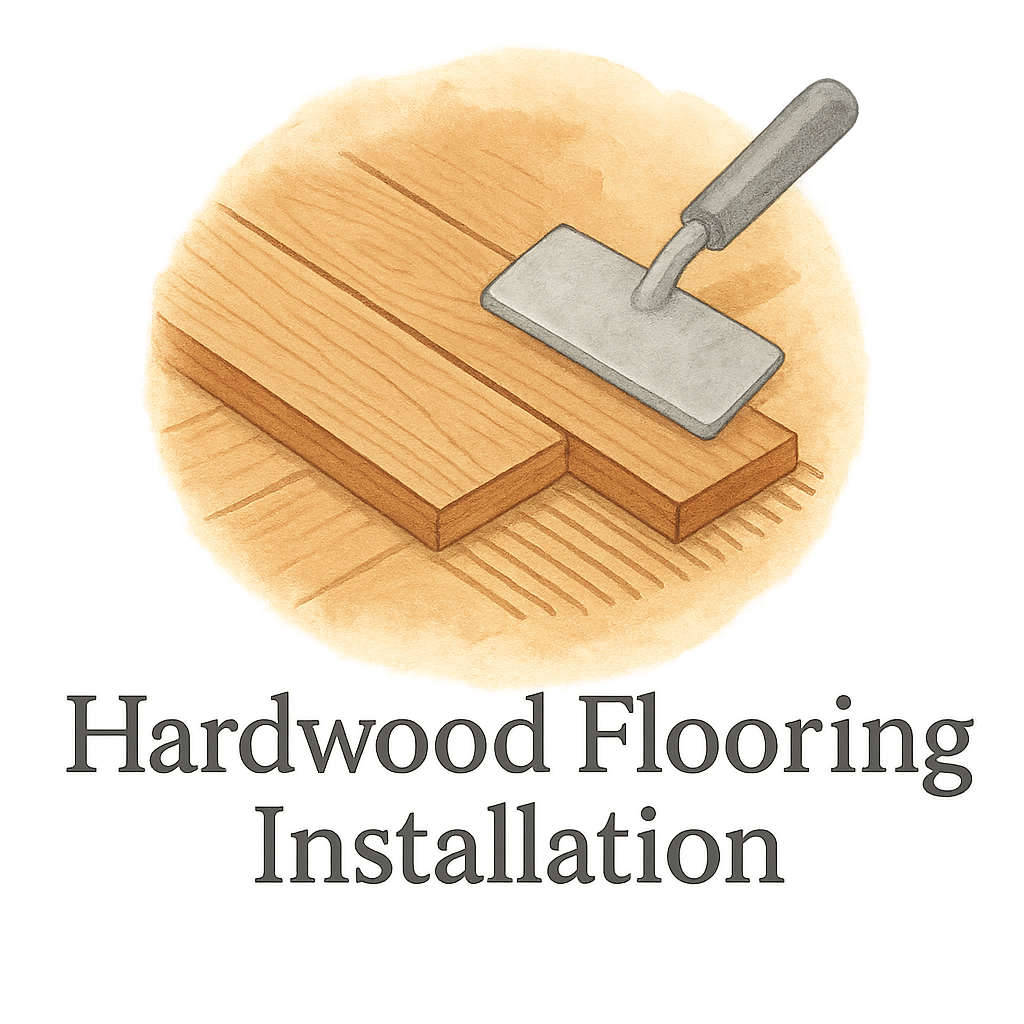Installing hardwood flooring is a great way to add value and elegance to your home. Whether you’re a seasoned DIYer or a first-timer, the preparation phase is crucial to ensure your project goes smoothly. In this guide, we’ll walk you through 10 essential prep tips for DIY hardwood flooring installation. These steps will help you avoid common pitfalls and achieve a professional-looking finish, all while saving money on installation costs.
Introduction
Before you get started, it’s important to understand that DIY hardwood flooring installation requires precision, patience, and the right preparation. Rushing through the prep process can lead to costly mistakes, so take your time and follow these expert tips for a smooth and successful installation.
1. Choose the Right Hardwood Flooring
Selecting the right hardwood for your flooring project is the first step in the process. Not all hardwoods are created equal, and some may be better suited for your space than others.
Types of Hardwood Flooring
There are two main categories of hardwood flooring: solid hardwood and engineered hardwood. Solid hardwood is made from a single piece of wood, while engineered hardwood consists of layers of wood veneer that are fused together. Engineered hardwood is more stable in areas with fluctuating humidity, making it a great option for basements or kitchens.
Choosing the Best Hardwood for Your Space
When choosing your hardwood, consider factors like durability, finish, and maintenance. Some hardwoods, like oak and maple, are more durable and resistant to scratches and dents, making them ideal for high-traffic areas. If you prefer a specific color or grain pattern, select a hardwood that matches your vision for the space.
For more information on hardwood options, check out this guide on hardwood flooring.
2. Measure and Plan the Layout
Accurate measurements are crucial for a successful hardwood flooring installation. If your measurements are off, it could lead to uneven seams or wasted materials.
Importance of Accurate Measurements
Before purchasing your flooring, carefully measure the dimensions of the room. Include the width and length, and make sure to account for any obstacles like doorways and vents. This will give you a clearer idea of how much material you’ll need.
Planning Your Layout for Optimal Results
Once you have your measurements, plan your layout. A straight-lay installation is the most common approach, but you can get creative with patterns like herringbone or diagonal layouts. Your layout plan should ensure that the wood flows evenly across the room, creating a visually appealing result.
3. Gather the Necessary Tools and Materials
Before starting the installation, make sure you have all the tools and materials you’ll need for the job. Having everything on hand will prevent delays and keep the project moving smoothly.
Essential Tools for Hardwood Flooring Installation
You’ll need a few basic tools, including:
- Measuring tape – for precise measurements
- Circular saw – for cutting planks
- Rubber mallet – to tap planks into place
- Tapping block – to protect the edges of the wood
- Spacers – to maintain expansion gaps
For a more comprehensive list of flooring installation tools, you can check out this tool guide.
Materials You’ll Need for the Project
In addition to the hardwood planks, you’ll need underlayment, adhesives (if required), and nails or staples for securing the boards. It’s also a good idea to have a wood filler for any gaps or imperfections that may appear after installation.

4. Prepare the Subfloor
Your subfloor plays a crucial role in the overall success of your hardwood flooring installation. If it’s uneven or damaged, it can affect the integrity of the entire flooring system.
Inspecting the Subfloor
Before laying your hardwood, inspect the subfloor for any imperfections or damage. It should be level, dry, and clean. A subfloor that’s too soft or uneven can lead to gaps between the hardwood planks or cause them to shift over time.
How to Fix an Uneven Subfloor
If your subfloor is uneven, you may need to sand it down or use a self-leveling compound to create a smooth, even surface. If there are any holes or cracks, fill them in with wood filler or repair them before proceeding.
5. Acclimate the Hardwood Flooring
Hardwood flooring is sensitive to temperature and humidity changes, which can cause it to expand or contract after installation. Acclimating the planks is an important step to ensure the wood adapts to the environment in which it will be installed.
Why Acclimation is Important
If you skip this step, your hardwood could warp or shrink after installation. Acclimating the wood allows it to adjust to the room’s temperature and humidity, ensuring it remains stable once installed.
How to Acclimate Your Hardwood Flooring Properly
Place the hardwood planks in the room where they will be installed and leave them for at least 48 hours. Make sure the room is at the proper temperature and humidity level before beginning the installation.
6. Install Underlayment for Extra Protection
Underlayment is an additional layer of material placed beneath your hardwood flooring to provide cushioning, moisture resistance, and soundproofing. It’s especially important for areas with high moisture levels, such as basements.
What is Underlayment?
Underlayment is a thin layer of material, typically foam or felt, that sits between the subfloor and the hardwood. It provides an extra layer of protection and helps absorb sound, making it a great option for high-traffic areas or rooms with noise concerns.
Choosing the Right Underlayment for Your Hardwood Flooring
The type of underlayment you choose will depend on the material of your hardwood and the level of protection you need. For instance, foam underlayment is great for soundproofing, while moisture-resistant underlayment is essential for areas like basements.
7. Check the Moisture Levels
Excess moisture can damage your hardwood flooring, leading to warping, buckling, or gaps between the planks. Checking the moisture levels of both the subfloor and the room is essential before installation.
How Moisture Affects Hardwood Flooring
Wood is a natural material that can absorb moisture from the environment. When exposed to high humidity levels, hardwood can expand, and when it dries out, it can shrink. This constant fluctuation can affect the integrity of your floor over time.
Tools for Testing Moisture Levels
Invest in a moisture meter to test both the subfloor and the hardwood itself. The ideal moisture content for hardwood flooring is around 6-9%. If your floor or subfloor exceeds this range, you’ll need to wait before installing your hardwood.
8. Remove Obstacles and Clean the Area
Before laying down your hardwood planks, make sure the installation area is completely clear of any obstacles, including furniture, debris, and dust.
Clearing the Floor Area
Move all furniture, rugs, and fixtures out of the room. You don’t want any distractions or obstacles while working. This will also make it easier to ensure that your planks are laid out evenly.
Cleaning Tips Before Installation
Give the subfloor a thorough cleaning to remove dust, dirt, and debris. A clean surface ensures better adhesion and a smoother installation process.
9. Plan for Expansion Gaps
Wood expands and contracts with temperature and humidity changes, which is why it’s crucial to leave expansion gaps along the edges of the room.
Why Expansion Gaps Matter
Without adequate expansion gaps, your hardwood flooring could buckle or warp over time. These gaps allow the wood to expand and contract naturally without causing damage to the floor.
How to Maintain Proper Expansion Gaps
Use spacers along the edges of the room to maintain a consistent gap. Once the floor is installed, these gaps can be covered with baseboards or quarter-round molding.
10. Double Check Everything Before Starting
Before you start laying the hardwood, take a final walk-through of your preparation process. Double-check all measurements, tools, and materials. Make sure everything is ready to go.
Final Preparations Before Installation
Take a moment to verify your layout and ensure the subfloor is in good condition. Make sure the planks are acclimated and the room is clear of any obstacles.
Mistakes to Avoid During Installation Prep
Common mistakes include poor measurements, skipping the acclimation process, and failing to check moisture levels. Taking the time to double-check everything will save you time and frustration during the installation process.
Conclusion
Preparing for a DIY hardwood flooring installation can seem like a lot of work, but following these tips will help ensure a smooth and successful project. By selecting the right materials, properly preparing your space, and taking the necessary precautions, you’ll be able to install beautiful hardwood floors that will last for years to come.
For more tips on hardwood flooring, don’t forget to check out our flooring maintenance guide to keep your floors in top condition.
FAQs About DIY Hardwood Flooring Installation
- How long does it take to install hardwood flooring?
- Can I install hardwood flooring over existing tile?
- What is the best hardwood flooring for high-traffic areas?
- Do I need to glue hardwood flooring down?
- What is the difference between solid and engineered hardwood flooring?
- How do I know if my subfloor is suitable for hardwood?
- Can I install hardwood flooring myself without professional help?


